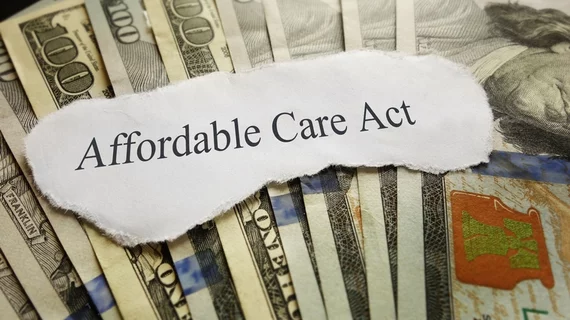UnitedHealth: Medicaid more cost-effective than ACA plans
Insuring individuals through Medicaid costs 43 percent less than coverage found on the Affordable Care Act (ACA) exchanges, according to an analysis released by UnitedHealth Group which argued the exchanges have failed to live up to expectations.
UnitedHealth—which largely abandoned the exchanges after projecting losses of $650 million in 2016—said it costs an average of $9,400 annually to cover a low-income, subsidized enrollee on the marketplace with $7,000 of that cost being borne by the federal government. For someone eligible for Medicaid thanks to the ACA, the overall cost is $5,400—with $5,100 coming from federal funds.
The same report also criticized the ACA exchanges for failing to reach enrollment expectations and making up a smaller-than-expected share of coverage than commercial insurance or federal programs.
“Exchange beneficiaries, as well as the remaining uninsured, would gain the most from being in suitably managed state-based public and private market structures which are more stable, efficient, and effective than exchanges,” the report said. “Transitioning to a simpler, flexible and more sustainable coverage system can help advance the important goals of providing more affordable coverage options, improving health outcomes and achieving federal and state budget savings.”
UnitedHealth blamed a variety of factors for the exchanges not living up to their promises. The risk pool was older and sicker than expected, leading to premiums rising sharply between 2014 and 2018. For an unsubsidized 27-year-old, the average annual cost for the second lowest-cost silver plan went up 88 percent. For a 40-year-old, there was a 76 percent jump.
Some of UnitedHealth’s assertions about the exchanges being “unstable” have been contradicted by previous research. For example, it said “many individuals” have dropped their ACA coverage mid-year because of the costs of coverage. While that it’s true millions of enrollees don’t maintain coverage throughout the year, UnitedHealth’s own analysis said it wasn’t close to a majority of enrollees (28 percent in 2015; 21 percent in 2018). Furthermore, enrollees may switch to different coverage based on life events, like starting a new job which offers insurance.
Coverage through the exchanges, however, isn’t likely to increase. Enrollment fell by around 3 percent for 2018, less than expected considering premium hikes and Republican efforts to repeal the law. UnitedHealth argues the money being used for subsidizing ACA coverage would be more effectively spent on a market where the insurer still has a major presence: Medicaid managed care.
“The federal government is projected to spend $56 billion on public exchange subsidies in 2018 and $704 billion over 10 years,” the report said. “Redeploying these federal resources to Medicaid coverage would cover more people at a lower cost.”

